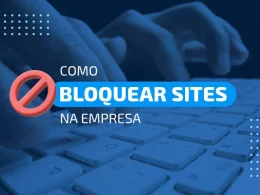The Covid-19 pandemic deeply impacted the way of working and life worldwide. Much of the offices of the office, after the coronavirus, were forced to perform their home services. The sights, trade and streets of cities are empty while the population “fulfills” social isolation.
It is not yet known when this isolation period will end and the routine return to normal . But will everything continue as it was before? Will the offices work the same way they operated before the pandemic? Tip: We created the Home Office Guide for Small and Medium Enterprises , with tips and tools for those who adopted this mode of Trablaho.
Many believe not, because the tendency is for the care of the virus to continue even after the end of the pandemic. This should happen, because the creation of the vaccine should still take long and people will be afraid of exposing themselves to the disease.
Therefore, we listed some changes that should happen in the offices after the emergence of the new coronavirus. Keep reading to check and adapt your company to these transformations:
Six Feet Office
Six Feet Office is a creation of Cushman & Wakefield, a global real estate service company. In free translation, “Six Feet” means six feet, which is a unit of measure used by Americans. When converted the “Six Feet” equals 1.82 meters, ie approximately the social insulation measure recommended by health organizations.
In this new office model the workstations should be at least six feet away from each other. In addition, stickers should be placed throughout the company to remind professionals the way they should behave in this environment.
These warnings should show, for example, where the employee must step and in which sense to walk to respect social isolation within the office. Thus, security increases both for the professional who respects the measures and those who share the workplace with him.
Open windows
Another change that will happen in companies will be the opening of the windows in the office rooms. Since air circulation is very relevant so that the virus does not spread, they will have to remain open during office hours.
If some company spaces do not have windows that can be opened, the office responsible will have to rethink the willingness of their employees. A renovation that makes available windows on site can be a good idea.
Frequent hygiene
Generally, the cleaning of companies' environments took place at the beginning and end of the day. After COVID-19, they should become much more frequent during office hours to prevent the virus from staying in tables, chairs and other surfaces used by the office team.
Another measure that should be implemented is the availability of contagion prevention materials, such as gel alcohol, masks and even plastics or papers on tables and equipment, so that the professional does not need to touch directly on these surfaces.
At the end of the day, employees who used these plastics in their desk should throw them away. The next day, a new one can be placed and the employee should always do the same procedure day after day.
Temperature Verification
Employee temperature verification can become a common measure in offices after coronavirus. This action is very important and large companies, such as Amazon and Walmart, have already included it in the daily life of its employees during the pandemic.
There is nothing in the Brazilian labor legislation that prevents the temperature verification of professionals in an office during or after a pandemic. Once this measure during this period, it can be considered a security measure of the company.
In addition to measuring employee temperature, companies can decide to regularly test their team when testing available to make sure no one is infected in the environment.
Different times
It is common for employees to start and finish their working hours together. This is another pattern that is about to change. Several companies worldwide are rethinking and reformulating the professionals' entry and exit times so that elevators are not crowded.
And so that there is no agglomeration within the offices, another plausible alternative is the removal of community spaces for meals, cafes and rest. Thus, the chances of social isolation being respected will be greater.
Less people in the office
Many companies that had never decreed home office had to do this due to the covid-19 pandemic. And what most of them is realizing is that this mode of work can work well.
So, will it really need to send all employees to return to the offices after the coronavirus is over?
This idea is being widely discussed and there is not just a certain answer to her. Depending on the number of hired professionals and the company's physical space, requiring everyone to go back to work in person may not be a good attitude.
Therefore, companies are reflecting on what can be done. Some should decree full home office to part of their employees, others may offer one day in the remote work week or make the office return for stages.
Technology used to decrease contagion
This change may not be so immediate, especially in Brazil. However, entrepreneurs are already thinking of ways to use technology to adapt offices and thus reduce the chances of contagion at work.
The idea is that with technology solutions will be created so that a company's employees do not need to touch many office surfaces with their hands. Based on the headquarters of a Middle East Waste Management Company , one of the ideas for the future is to place doors that open with movement sensors or facial recognition.
In addition, the possibility of performing everyday tasks, such as asking for a coffee, by the mobile phone are also being considered advantageous.
These 7 measures may affect the routines in the offices during and after the pandemic, because care will still be required after this more critical period of the spread of the disease.
After reading our text and finding out what trends will be present in companies, do you already know which one will be applied to your office? Leave your testimonial in the comments!










2 comments
Comments closed